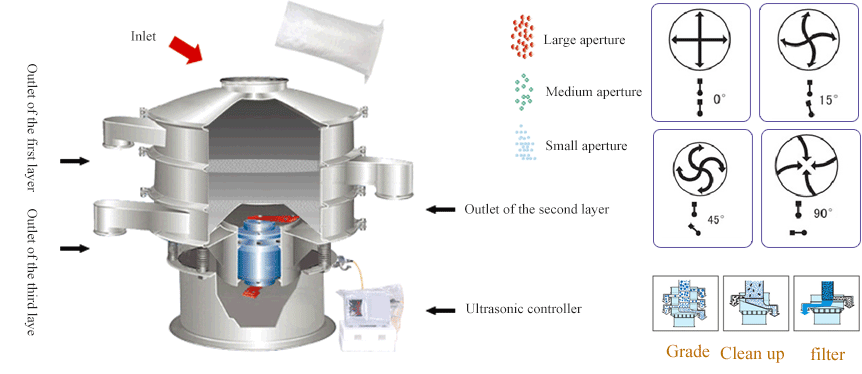How Vibrating Sieves Enhance the Precision of Aggregate Size Distribution
In the realm of construction and material testing, precision is critical, especially when analyzing the size distribution of aggregates. Vibrating sieves play a pivotal role in this process by ensuring that each particle is accurately separated according to size, leading to reliable results. Unlike traditional sieve methods that rely on manual shaking, vibrating sieves use mechanical vibration to evenly distribute aggregates across the sieve surfaces. This vibration minimizes the chances of particle entrapment and ensures that all particles pass through the appropriate mesh size without manual interference, which can often introduce human error.
Moreover, the consistent and controlled vibrations lead to a more efficient separation process, reducing the time required for testing while maintaining accuracy. This efficiency is particularly crucial in large-scale construction projects where timely and precise aggregate analysis directly impacts material quality and, ultimately, the durability and safety of the construction. The high-frequency vibrations also enable the use of finer mesh sizes, allowing for more detailed analysis of fine aggregates, which is essential in quality control processes for specific construction applications. Overall, vibrating sieves enhance the precision of aggregate size distribution by providing a reliable, consistent, and efficient method of particle separation.

Common Challenges in Sieve Analysis and How Vibrating Sieves Solve Them
Sieve analysis, while fundamental in aggregate testing, is not without its challenges. One common issue is the inconsistency in particle distribution during manual shaking, which can lead to inaccurate results. This inconsistency is often due to the uneven application of force, which can cause particles to cluster or not pass through the sieve as intended. Vibrating sieves address this challenge by providing uniform vibrations that ensure all particles are evenly distributed across the sieve surfaces, thereby reducing the risk of clustering and improving the accuracy of the analysis.
Another challenge is the time-consuming nature of traditional sieve analysis, especially when dealing with large volumes of material or fine aggregates that require extensive sieving. Vibrating sieves significantly reduce the time required for analysis by enhancing the speed at which particles are separated. This is particularly beneficial in settings where multiple samples need to be tested quickly, such as in quality control laboratories or construction sites.

Additionally, the wear and tear on traditional sieves can lead to degradation of the mesh, resulting in inaccurate sieving over time. Vibrating sieves, with their controlled vibration mechanisms, reduce the mechanical stress on the sieve mesh, extending the life of the equipment and maintaining accuracy over prolonged use. By addressing these common challenges, vibrating sieves not only improve the reliability of sieve analysis but also enhance overall operational efficiency in aggregate testing.
Case Studies: Improving Construction Quality with Vibrating Sieve Analysis
The impact of vibrating sieves on construction quality can be seen through various case studies where their implementation has led to significant improvements in material testing processes. For instance, in a large-scale infrastructure project involving the construction of a highway, consistent quality of aggregate materials was crucial. The project team integrated vibrating sieves into their quality control process to ensure that all aggregates used met the precise size requirements. The result was a noticeable improvement in the uniformity and strength of the asphalt, leading to a more durable and long-lasting roadway.

In another case, a concrete production facility faced challenges with the variability in aggregate size, which was affecting the consistency of their concrete mixes. By adopting vibrating sieve technology, the facility was able to achieve a more precise aggregate size distribution, resulting in concrete mixes with improved workability and strength. This not only enhanced the quality of their products but also reduced material waste and production costs.
Lastly, a construction company working on a high-rise building project utilized vibrating sieves to ensure the fine aggregates used in their concrete mixes were free from impurities and met strict size specifications. The use of vibrating sieves allowed the company to maintain stringent quality control, resulting in a final structure that exceeded safety standards and exhibited superior durability.
These case studies highlight the practical benefits of incorporating vibrating sieve analysis into construction projects. By ensuring precise aggregate size distribution, these tools contribute to higher quality construction materials, leading to safer, more reliable, and longer-lasting infrastructure.
